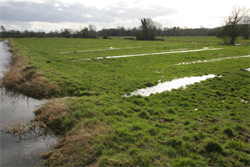Three methods will be explored, hard hammer percussion, soft hammer percussion, and pressure flaking and their will be ample opportunity to knap flint under direct guidance from an experienced knapper. Day two will provide an opportunity to work on a knapping project and explore the production of birch tar glues and sinew work for creating composite tools.
The course is run by Luke Winter, manager of the ATC and experimental archaeologist whose past research has centred on the replication of stone tools, their use in butchery tasks and what this tells us about human evolution and cultural development.
This course is designed for beginners and aims to develop a set of skills that can be improved with further practice. The type of tool produced in this course depends entirely on individual skill. £99.00 including longhouse stay.
Neolithic / Bronze age Pottery
On the first day we will start by preparing our own clay, grog / tempers then build our own simple pots and the learn delicate art of fire management. The fire will burn on into the evening and will be a great social event so bring an instrument, a story or experience as we tend the fire into the night.
On day two we will look at the success of our firing and then concentrate on making beakers and urns using traditional techniques. As pots need a significant drying period participants can take their pots home to fire themselves or we can do it for you in a conventional Kiln.
Anna Hudson is an experienced potter, crafts person and artist who has worked with the centre for several years. Her experiences are many and varied and attention to detail second to none.
£99.00 including longhouse stay.
To book your place call Pascale on 01725 517618 …… atc@dorsetcc.gov.uk



